What Is Sewerage System?
Important Point
Sewerage is a system which expresses sewerage, a soil drainage by means of a sewer. It includes elements such as receptacle drains, manholes, pumping stations, collection overflows, and inspection chambers for mixed sewage or sanitary sewers.
Sewerage reaches the wastewater treatment system or the injection point into the area. It is a series of pipes, chambers, manholes, etc. that conveys sewerage and stormwater.
Types of Sewerage System:
- Combined system.
- Separate system.
- Partial Separate System.
1. Combined Sewage System-
In a combined system, the very same sewer is meant to convey all household sewage, commercial waste as well as surface and flood water.
Situation of Adoption for Combined Sewage System:
- Rainfall has been going on all year.
- Both the sanitary sewage and the rainwater must be pumped.
- The region to be torn down is densely built-up and there is not enough space for laying pipes.
- Efficient or faster flows need to be given.
- If the sewers are placed together with the general construction of the city, a mixed system is desired.
Advantages of Combined Sewage System:
- Rainwater holds the waste fresh, providing a way and more affordable for disposal purposes.
- Dilution also benefits, as this is in itself a form of treatment.
- Automatic flushing is supplied with water.
- This is the fastest way to collect and house plumbing economies.
Disadvantages of Combined Sewage System:
- The greater sewer size would require bigger excavations.
- Overflowing under the worst circumstances could endanger human safety.
- The cost of pumping and disposal will rise due to the high amount of sewage to be treated.
- The dry conditions stream is a tiny portion of the overall flow, the large size of the sewer will also allow silting to increase due to the low flow rate of the sewer during the dry period of the year.
Also, Read: What Is Cross Drainage Work | Types of Cross Drainage Works | Syphon Aqueduct
2. Separate Sewage System-
In a separate system, residential and agricultural waste is transported with one system of sewers, while flood and surface water is transported in another set of sewers.
Situation of Adoption for Separate Sewage System:
- Where there is uneven rainfall.
- Sanitary waste shall have one outlet and other outlets for disposal or surface water shall be available.
- The sanitary sewage must be pumped.
- Separate sewers need to be deepened, and the stormwater drains lower to the surface than the excavation economy.
- If the soil has steep slopes, it is easier to turn floodwater from an open drain into a natural stream.
- The funding available is limited, but sanitary drainage is crucial.
- If the subsoil is rough, it is challenging and expensive to lay a wide combined sewer.
- If the sewers are placed before the construction of the city, it is advisable to follow a separate system.
Advantages of Separate Sewage System:
- Although shorter in length, the sewers are very economical. Surface water can be taken in open or closed ducts or drains at or near the surface and drained at sufficient sources, making the construction of stormwater sewers much simpler.
- There is no chance of runoff from lakes since no overflow of storms is to be given.
- The amount of waste to be treated is limited and the drainage or treatment works may be economically planned.
- If the pumping of the waste at the treatment plant were required, the cost of pumping will be much smaller, since there is no need to drain the floodwater.
Disadvantages of Separate Sewage System:
- Only if it is placed at a steep gradient, the self-cleaning rate in the sewer cannot be ensured and the flushing must be carried out. This will prove unsatisfactory and costly.
- There could be a chance of interference by an illegal accumulation of rainwater as well as the consequent leakage of sewage.
- Multiple housing plumbing is another drawback. 2 sewers or drains in the street leading to a larger disruption of transportation, which restores every one of them, have been taken out.
- Maintenance costs for two systems are higher than for one system.
Also, Read: Basic Plumbing System | Drainage System | Supply and Drainage Subsystems
3. Partial Separate Sewage System-
A partly separate system is a variation of a separate system in which separate sewers that discharge domestic sewage and commercial waste often comprise a portion of the surface drained from the backyards and roofs of the property.
Why We Need a Partially Separate System?
It can be claimed that a combined sewerage scheme was not considered to be sufficient within tropical Soil conditions for the reasons described herein.
- Insufficient volumes of sewage water accessing the sewers due to a large variety of unwatered areas or because of other factors, the dry weather flow (DWF) is usually a limited proportion of the overall flow.
- Low economy with minimal funding available.
- Difficulties in the management and repair of the infrastructure attributable to the lack of oversight of fewer trained employees. Local authorities responsible for the job do not typically pay any attention to the maintenance of skilled and competent workers.
In fact, on the basis of the factors mentioned above, it has been considered necessary to provide a balance between the separate and combined systems and to follow, as far as possible, a partly combined as well as partially separate sewage scheme.
The underground sewage system holds either sanitary or residential sewers from which rainwater can also be discharged from the backyard and roofs of the homes.
In the other side, the stormwater from the front of the house and the surface wash of the streets and roads may, at some distance, divide into the watercourse flowing close or to the same low-lying area.
Advantages of Partial Separate System:
- It optimizes the drainage of the property.
- It has fair sewage sizes and is inexpensive.
- Rainwater gives some protection from silting in the sewer.
Disadvantages of Partial Separate System:
- Low pace during the dry season.
- Storm overflows can be deemed appropriate.
Also, Read: BOD Vs COD | What Is BOD | What Is COD
How Does a Sewage Treatment Plant Work?
The sewage treatment plant uses internal processes to break down solid waste to create safer, more environmentally friendly effluent.
Wastewater and sewage are supplied to the main tank where the solids and liquids are distributed. The resultant liquor runs into the chamber of the bio-zone. The pump airs the waste in the chamber and allows friendly bacteria to condense organic matter. It breaks down and purifies the result.
As it exits the final waste chamber, 95 percent of the waste left over is safe and ready for dispersion into local ditches or soaking schemes, according to the approval of the appropriate environmental body.
Also, Read: Grey Water vs Black Water | What Is Grey Water | What Is Black Water
Sewage System Includes The Following:
- House Service Connections Link the house to the sewers on the lane.
- Sewers These are pipes or ducts designed for the transport of sewage that is laid around the roads and flow by gravity.
- Lift stations When the sewers are at a deeper level, lift stations are used to help transfer the sewage from the lower elevations below the ground to the higher elevation needed.
- Pumping stations The sewage is moved from one site to another.
- Water Treatment Plants Treatment of sewage to meet the allowable discharge quality.
- Safe final effluent drainage The sewers are the most critical component of the sewage system. They are laid down underneath the ground and are impossible to restore.
- A great deal of consideration is also required in their O&M and the following concerns are discussed.
- Quality Maintenance of sewerage system.
- Type of Maintenance of Sewerage System.
Quality Maintenance of Sewerage System:
The efficiency of the maintenance of the wastewater system consists of the optimal use of manpower, machinery and resources to maintain the system in good order so that it can successfully fulfill its intended function for the processing of wastewater.
Type of Maintenance of Sewerage System:
There have been three types of maintenance of the drainage system –
- Preventive.
- Routine.
- Emergency.
Preventive or routine repairs should be carried out in order to deter any deterioration of the infrastructure and to stop emergency operations to cope with clogged drainage pipes or overflowing manholes or back-up of water into the house or systemic collapse of the system.
Preventive maintenance is more efficient and guarantees efficiency in the service of the sewer services.
Emergency corrections, which can be very unlikely if adequate servicing is carried out well, must also be accounted for. Proper inspection and preventive maintenance are required.
What Is Sewerage System?
Sewerage is the infrastructure that conveys sewage or surface runoff using sewers. It encompasses components such as receiving drains, manholes, pumping stations, storm overflows, and screening chambers of the combined sewer or sanitary sewer.
Types of Sewerage System
There are three types of modern sewer systems:
- Sanitary Sewers (also called foul sewers).
- Storm Sewers (also called surface water sewers).
- Combined Sewers.
Also, Read: What Is Soil Vent Pipe | How Does Soil Stack Pipe Works | Soil Vent Pipe Material | Types of Plumbing System
Why We Need Partially Separate System?
This type of sewerage system helps decrease the load from a combined sewerage system because only the water from initial rainfalls(water from acid rain) is added to sewage water and after than this system work as a separate system.
How Does a Sewer System Work?
The drain system within your home works entirely by gravity, allowing wastewater to flow downhill through a series of large diameter pipes. These drain pipes are connected to a vent pipe system that bring fresh air to the drain pipes, preventing suction that would either stop or slow the free flow of wastewater
How Does a Sewage Treatment Plant Work?
Using internal mechanisms, a sewage treatment plant works by breaking down solid waste to produce a cleaner, more environmentally friendly effluent. Wastewater and sewage are supplied to the primary tank, where the solids and liquids disperse. The resulting liquor flows into the biozone chamber.
Types of Sewer Systems for Homes
- Septic Tank. A septic tank is a buried, watertight tank designated and constructed to receive and partially treat raw domestic sanitary wastewater.
- Conventional System.
- Chamber System.
- Drip Distribution System.
- Aerobic Treatment Unit.
- Mound Systems.
- Recirculating Sand Filter System.
- Evapotranspiration System
Types of Sewerage
The three types of sewers are sanitary sewers, storm sewers, and combined sewers. All three of these sewer systems play important roles in ensuring that the waste we produce is transported and treated properly.
How Does a Sewer Treatment Plant Work?
As sewage enters a plant for treatment, it flows through a screen, which removes large floating objects such as rags and sticks that might clog pipes or damage equipment. After sewage has been screened, it passes into a grit chamber, where cinders, sand, and small stones settle to the bottom.
Define Sewerage
Sewerage refers to the system of pipes, drains, and other infrastructure that collects and transports wastewater, including human and industrial waste, from homes, businesses, and other sources to treatment facilities or disposal sites. The term “sewerage” can also refer to the process of treating or disposing of wastewater to prevent pollution and protect public health.
Partially Separate Sewerage System
Partially separated sewers convey wastewater from inside homes and businesses, and stormwater from roof gutters and downspouts and send these waters to treatment plants. All other stormwater (from places like storm drains) is conveyed in separate drainage pipes.
Sewer System Meaning
Definition. System of pipes, usually underground, for carrying waste water and human waste away from houses and other buildings, to a place where they can be safely get rid of.
Separate Sewerage System
Separate sewers mean that sewage and rainwater are divided into two separate pipe systems. A separate sewer system minimises the risk of flooded basements during extreme rainfall events for people living in low-lying areas.
Sewarage
The sewerage system plays a critical role in maintaining public hygiene and sanitation, preventing the spread of diseases, and protecting the environment by removing and treating wastewater before it is discharged into rivers, lakes, or oceans.
Ano Ang Sewerage System
Ang sewerage system ay binubuo ng mga kagamitan at kagamitan sa pagtatapon ng tubig-basa, likido at mga solid waste sa isang lungsod o komunidad. Ito ay kinabibilangan ng mga pipeline, drain, mga sewage treatment plant, at iba pang mga pasilidad na nangangalaga sa kalusugan ng publiko at kapaligiran sa pamamagitan ng paglilinis ng mga waste materials bago ito mapunta sa mga waterways o ma-dispose ng wastong paraan.
Define Sewerage System
A sewerage system is a network of pipes, drains, and other infrastructure used for the collection, transportation, and treatment of wastewater and sewage. The system is designed to carry and dispose of human and industrial waste, used water from households, and other forms of liquid and solid waste from a community or city.
What Is Sewage System?
A sewage system is a network of underground pipes, drains, and other infrastructure used to transport wastewater and sewage away from homes, businesses, and other sources to treatment plants or disposal sites. The sewage system is designed to collect and transport human and industrial waste, used water from households, and other forms of liquid and solid waste, and to prevent the spread of disease-causing organisms and pollutants.
Separate Drainage System Diagram
In a separate drainage system, there are two separate pipes: one for rainwater runoff and another for sewage. The rainwater runoff pipe collects rainwater from roofs, streets, and other surfaces, and discharges it into surface waters, such as rivers or lakes. The sewage pipe carries wastewater from toilets, sinks, showers, and other sources to a treatment plant for processing before discharge.
Sewage System Definition
A sewage system, also known as a wastewater system, is a network of underground pipes, pumps, and treatment plants used for the collection, transportation, and treatment of wastewater and sewage from homes, businesses, and other sources. The system is designed to remove pollutants and disease-causing organisms from the wastewater before it is discharged into waterways or reused for other purposes.
Like this post? Share it with your friends!
Suggested Read –
- What Is Dressing of Stone | Types of Dressing of Stone
- Alignment of Road | Alignment In Design | Horizontal Alignment of Road | Vertical Alignment of Road
- What Is Auxiliary Plane | Types of Auxiliary Plane | Types of Auxiliary View | How to Draw Auxiliary View | Drawing Steps for Auxiliary View
- Well Point System | Types of Well Point System | Well Point Dewatering | PVC Well Point | Well Point Installation | Well Point for Shallow Well
- What Is a Cavity Wall | How to Build a Cavity Wall | Cavity Wall Detail | Cavity Wall Thickness | Cavity Wall Insulation Pros and Cons | Brick Cavity Wall
Originally posted 2023-04-21 18:36:48.
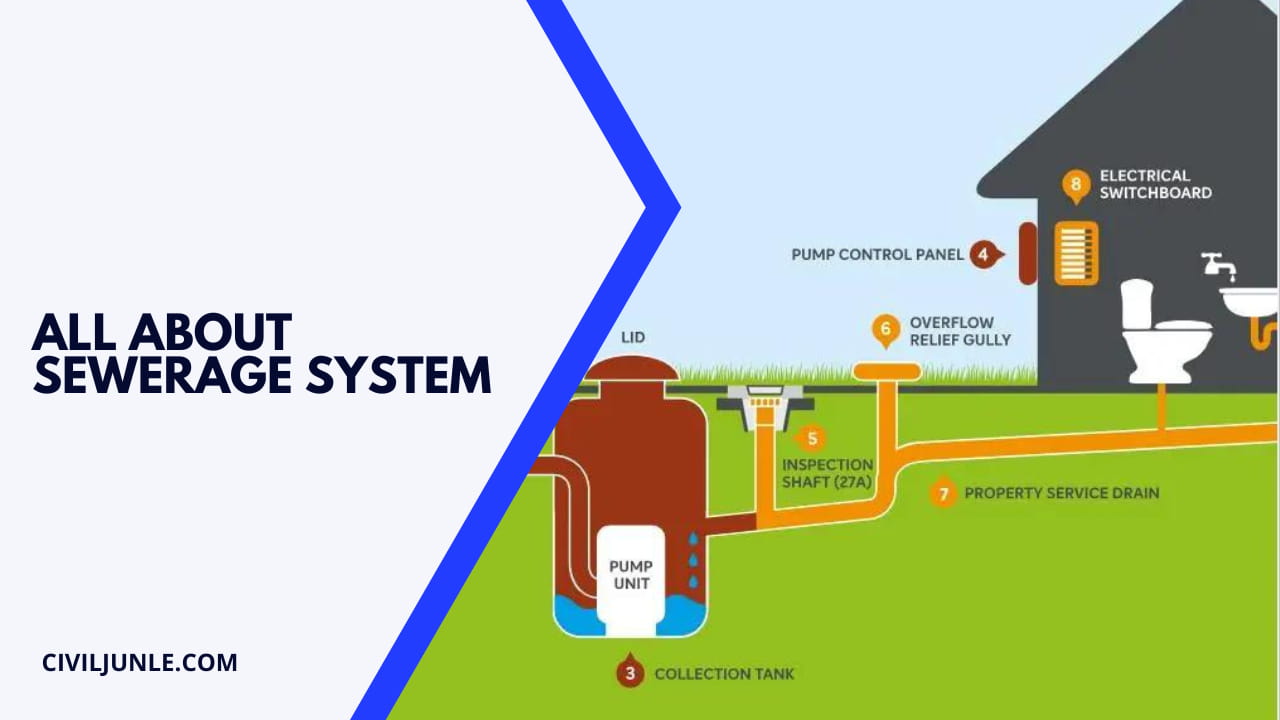
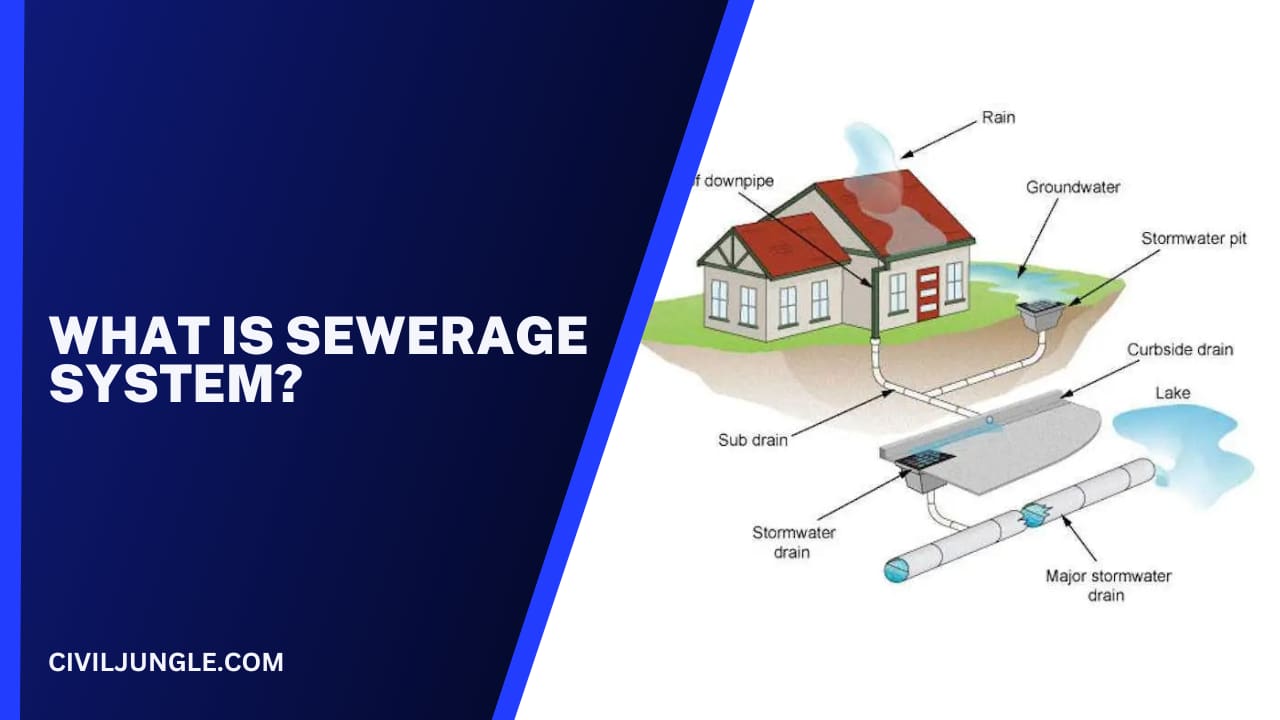
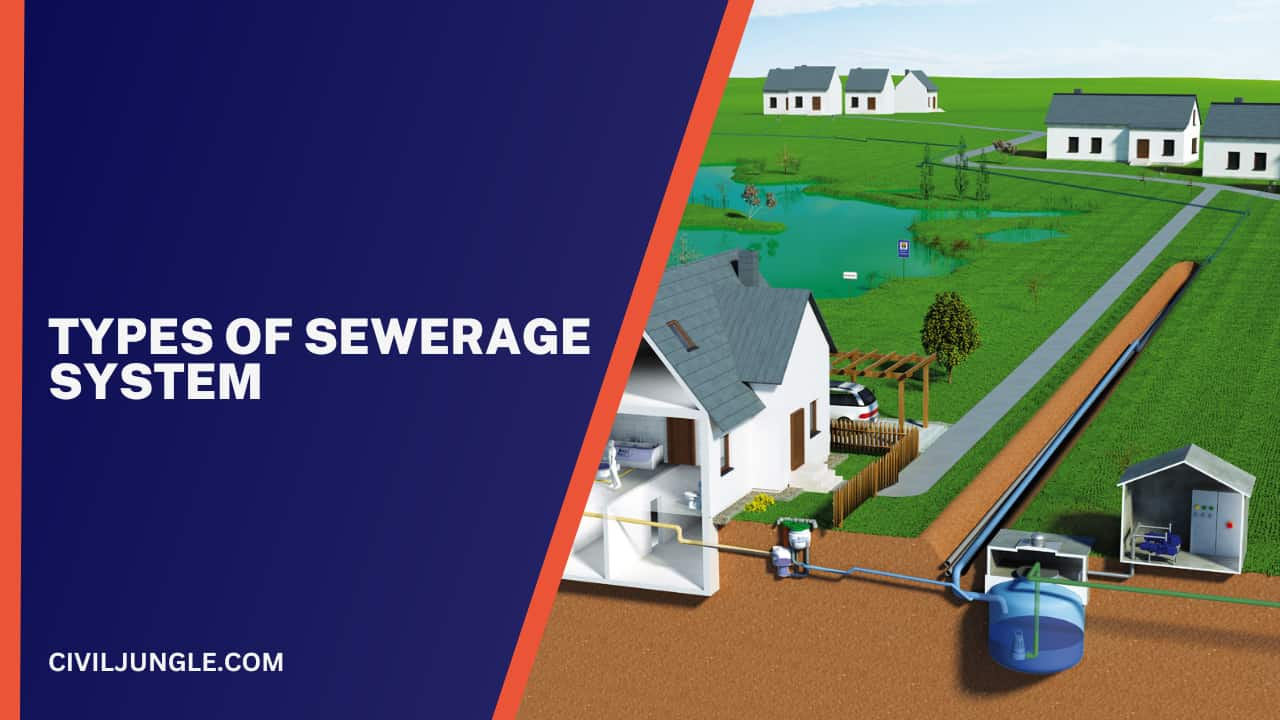
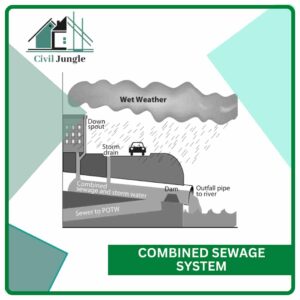
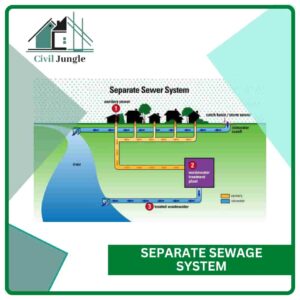
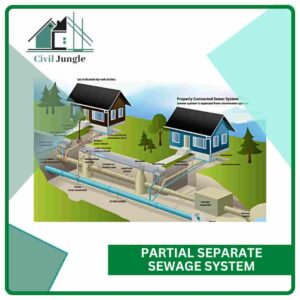
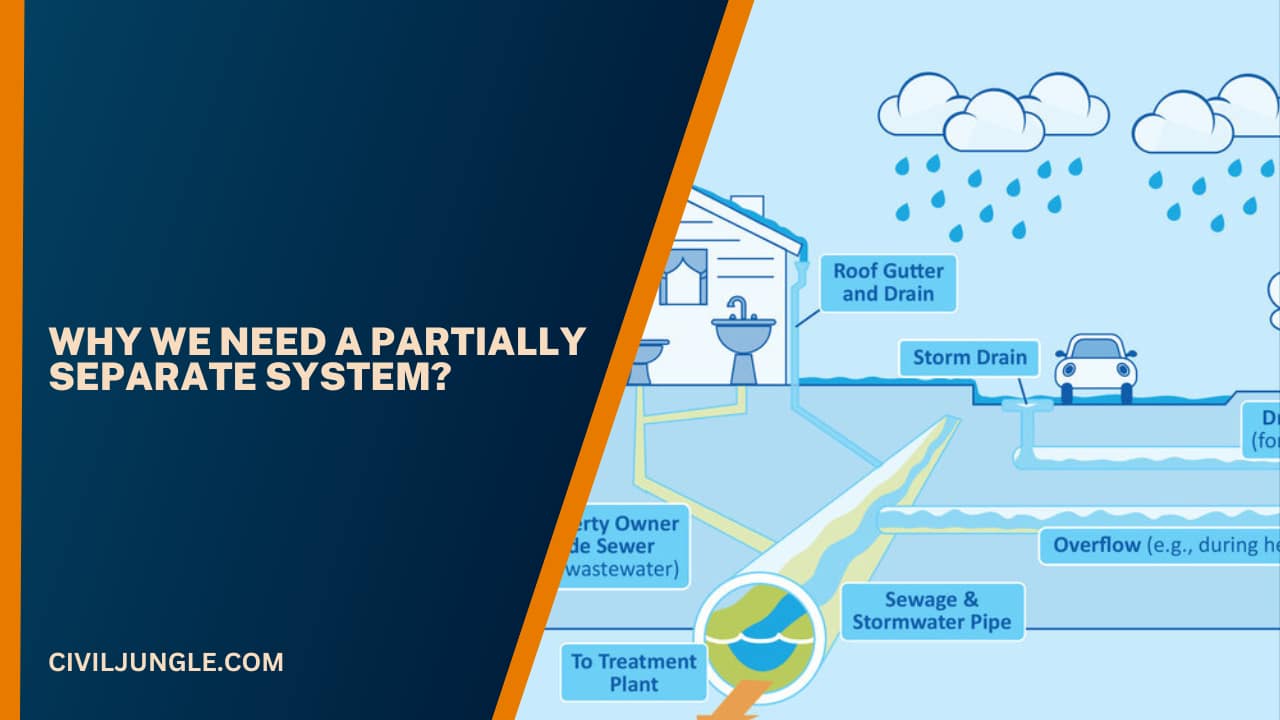
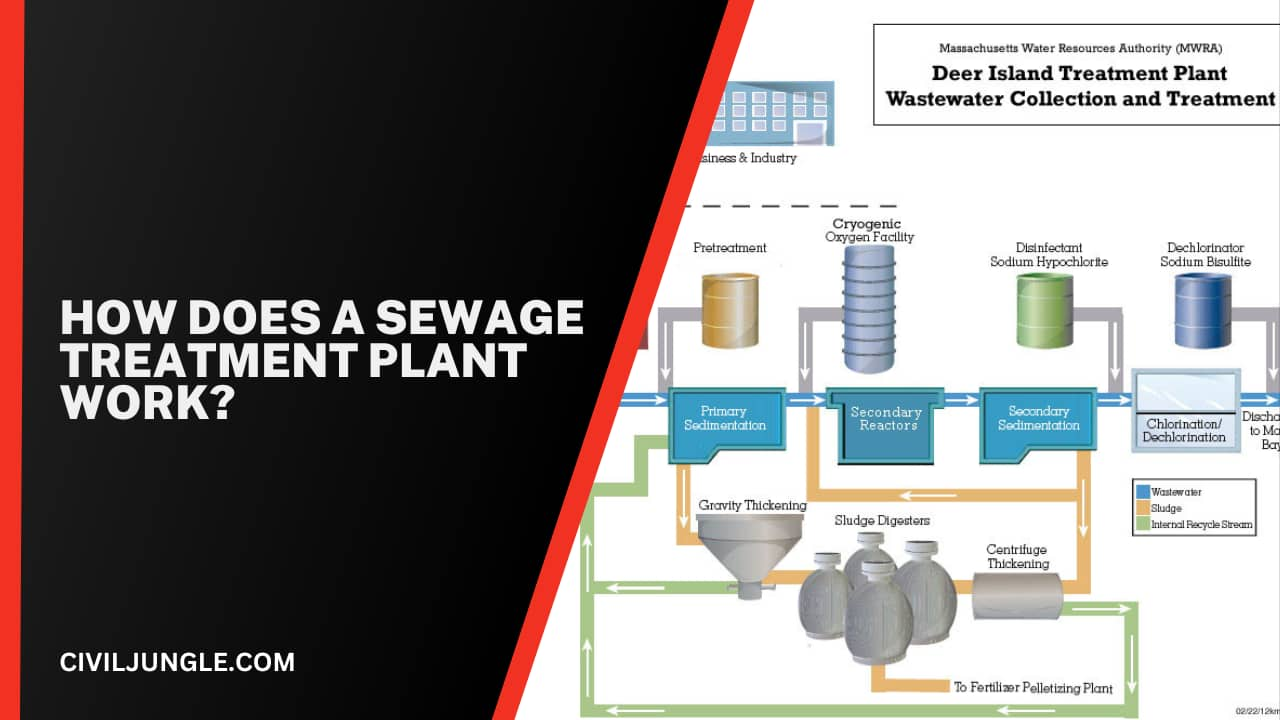
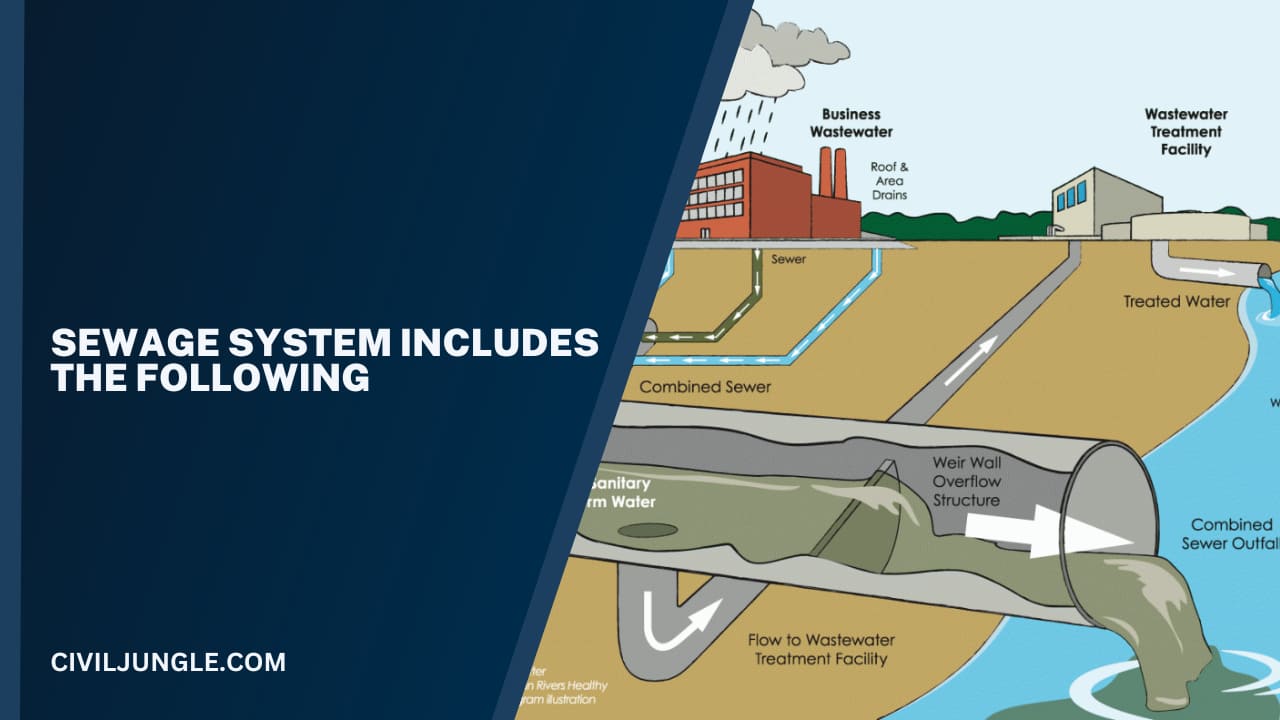
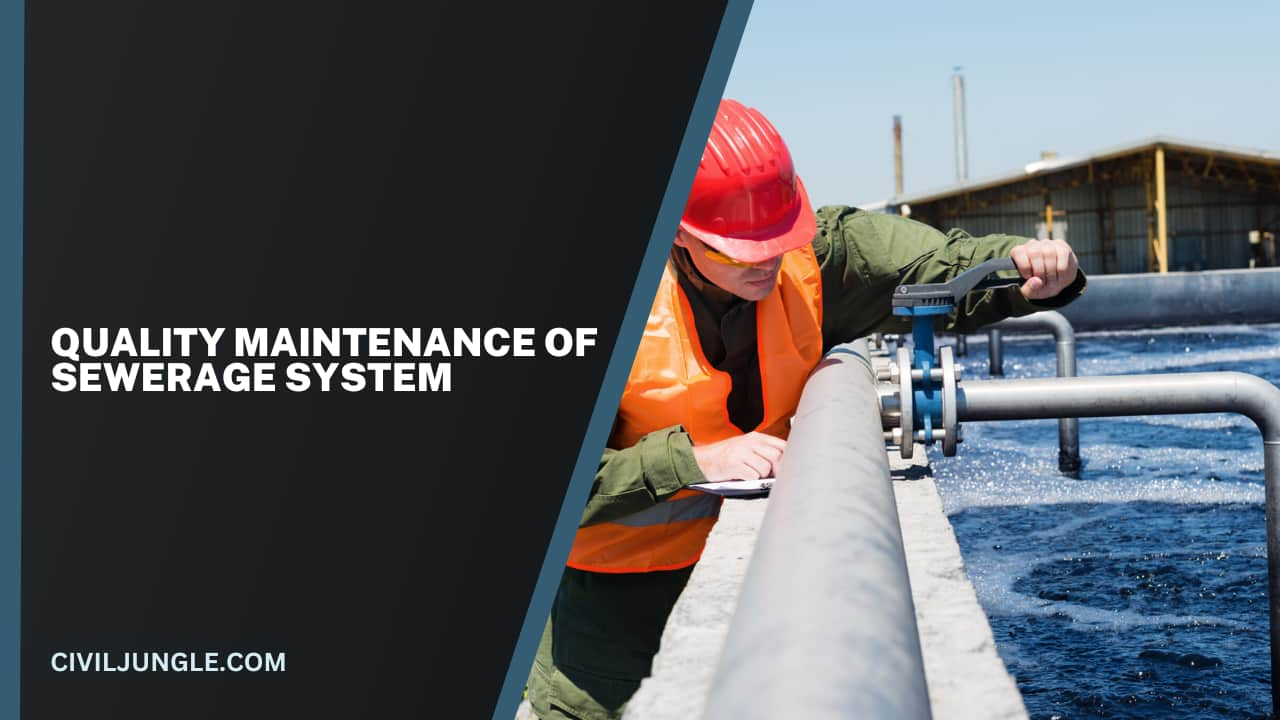
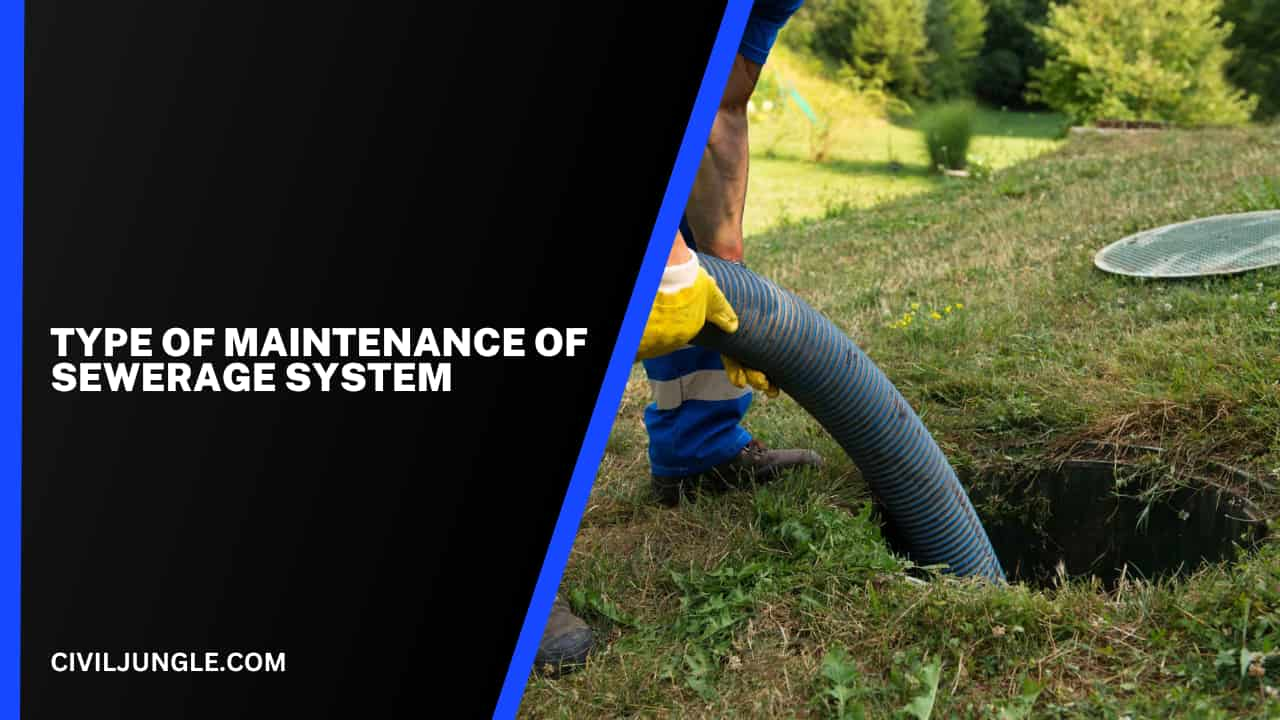

Leave a Reply